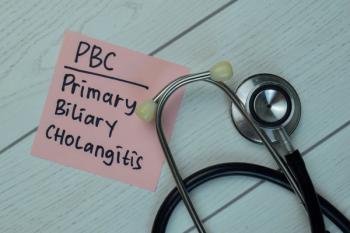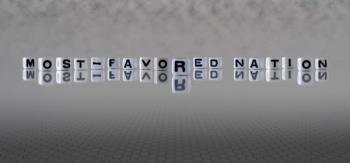
Repeat rituximab therapy helps in resistant RA
Most patients with resistant rheumatoid arthritis (RA) who failed to respond to an initial cycle of rituximab (Rituxan) showed clinical improvement following a second treatment cycle, a British study found, as reported by MedPage.
Most patients with resistant rheumatoid arthritis (RA) who failed to respond to an initial cycle of rituximab (Rituxan) showed clinical improvement following a second treatment cycle, a British study found, as reported by MedPage.
Six months after cycle 2, significant improvements were seen on disease-activity scores compared with scores either at baseline or immediately before retreatment (P<.001 for both), according to the researchers.
In addition, almost three-quarters of patients had moderate or good responses, according to the criteria of the European League Against Rheumatism (EULAR), the researchers reported in the May issue of Arthritis & Rheumatism.
Rituximab is a chimeric monoclonal antibody against the CD20 protein, which is found primarily on the surface of B cells. In rheumatoid arthritis (RA), this B-cell depleting agent is generally reserved for patients who do not respond to conventional disease-modifying medications such as methotrexate or to anti-tumor necrosis factor (TNF) drugs.
“Consequently, patients who do not exhibit an adequate response to rituximab have frequently exhausted all other available therapy options, and treatment of these patients is challenging,” the researchers noted in their report.
Initial studies of rituximab suggested that the drug completely depleted B cells, and that a lack of response might reflect B-cell-independent mechanisms in some patients. However, the development of more sensitive methods of measuring circulating B cells has demonstrated otherwise.
Highly sensitive flow cytometry has shown that almost all patients who do not show a clinical response have incomplete B-cell depletion, especially in the synovium.
To see if an additional cycle of treatment could enhance depletion and lead to clinical response, the investigators treated 25 non-responders with 2 infusions (each 1 g) of rituximab at least 6 months after the first pair of infusions but before B-cell repopulation had occurred.
To be classified as a EULAR responder (either moderate or good), patients must have a significant change in their disease activity scores and low current disease activity.
Total B-cell levels and levels of all circulating B-cell subtypes (naive, memory, and preplasma cells) were higher at baseline in first-cycle non-responders. Most cells that remained 3 months after the first cycle were preplasma cells.
Six months after the second rituximab cycle, 38% of patients had complete B-cell depletion. In contrast, among the non-responders only 9% had shown complete depletion after the first cycle.
After retreatment, 72% were classified as responders, 32% had a good response, and 16% were in remission.
In both cycles, good or moderate EULAR responses were seen in 50% of patients with complete B-cell depletion, but in only 31% of those without complete depletion.
Nine of the patients who responded to the second cycle experienced a relapse at a median time of 11 months post-treatment.
“These findings have a number of implications for understanding the role of B cells in RA, for using treatment to target them effectively, and for developing a rational approach to the management of resistant RA,” the researchers noted.
For instance, unlike naive and memory B cells, preplasma cells do not express CD20 and therefore are not directly targeted by rituximab.
The persistence of preplasma cells in circulation suggests continuing B-cell activity at sites, such as the synovium, and non-responders also may have more B-cell tissue infiltration.
In addition, some patients develop human antichimeric antibodies following exposure to rituximab, which could result in less depletion in subsequent treatment cycles.
Baseline B-cell levels and early depletion now can be used as biomarkers for response to rituximab, but these findings must be confirmed in larger studies, the investigators cautioned.
Other strategies that could be tried for non-responders include the use of a different B-cell depleting agent or a different dose during the initial cycle.
“We already knew that rituximab was helpful in most patients with resistant RA by depleting their B cells temporarily,” Edward M. Vital, MBChB, of the University of Leeds, told Formulary. “However, although B cells appear to be depleted to some degree in all patients, some still do not have an improvement in the symptoms and signs of their arthritis.
This raises two important issues, he noted. First, why has the treatment failed? Were B cells the wrong target in these patients? Second, how to manage this very difficult group of patients-should they switch to another therapy? “This study shows that these patients are potentially still amenable to B-cell-targeted therapy if B cells were more effectively depleted, and further, that giving additional rituximab before B cells have fully repopulated is one way to achieve more effective depletion,” he said.
Vital told Formulary there are many other questions still to be addressed. Should patients receive different doses of rituximab initially rather than waiting to assess depletion and response? Some patients may require larger or smaller doses of rituximab depending on B-cell number, or their stage or severity of arthritis. This study deliberately took the patients with the worst responses after rituximab. “However, we are also now studying the variations in response to rituximab from cycle to cycle in patients who have partial responses but still are not in remission, or even those who lose their response over time,” he said.
Three of the investigators have received honoraria from Roche, and one has received consulting and speaking fees from UCB and Centocor and has acted as a study investigator for Centocor.
Newsletter
Get the latest industry news, event updates, and more from Managed healthcare Executive.

















































